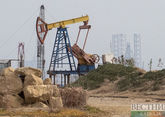OPEC nations pumped slightly more crude in September as Libya’s biggest oil field returned to production.
Output from the Organization of Petroleum Exporting Countries was 32.83 million barrels a day in September, a gain of 120,000 barrels a day from August, according to a Bloomberg News survey of analysts, oil companies and ship-tracking data.
Production in Libya, which along with Nigeria is exempt from output cuts, rebounded 30,000 barrels a day to 920,000 barrels in September as the Sharara field restarted after a halt of more than two weeks. Nigerian output increased by 20,000 barrels to 1.77 million barrels a day, just short of the 1.8 million barrels a day that could eventually lead to its participation in OPEC’s effort to reduce output.
Saudi Arabia boosted production by 60,000 barrels a day to 10.06 million barrels, while Gulf neighbor Kuwait lifted output by 50,000 barrels to 2.76 million barrels a day. The recovery in production puts OPEC back to levels reached in July, when the group pumped 32.85 million barrels a day.
A Reuters survey estimates that OPEC’s crude oil production rose by 50,000 bpd to 32.72 MMbpd in September 2017—compared to the previous month. OPEC’s compliance with the production cut deal fell to 86% in September 2017. It was at 89% in August 2017. Meanwhile, OPEC’s crude oil production hit a 2017 high in July 2017.
Brent touched a two-year closing high of $59.02 a barrel on Sept. 25. Prices traded at $55.59 as of 4:19 p.m. in London on Monday.










